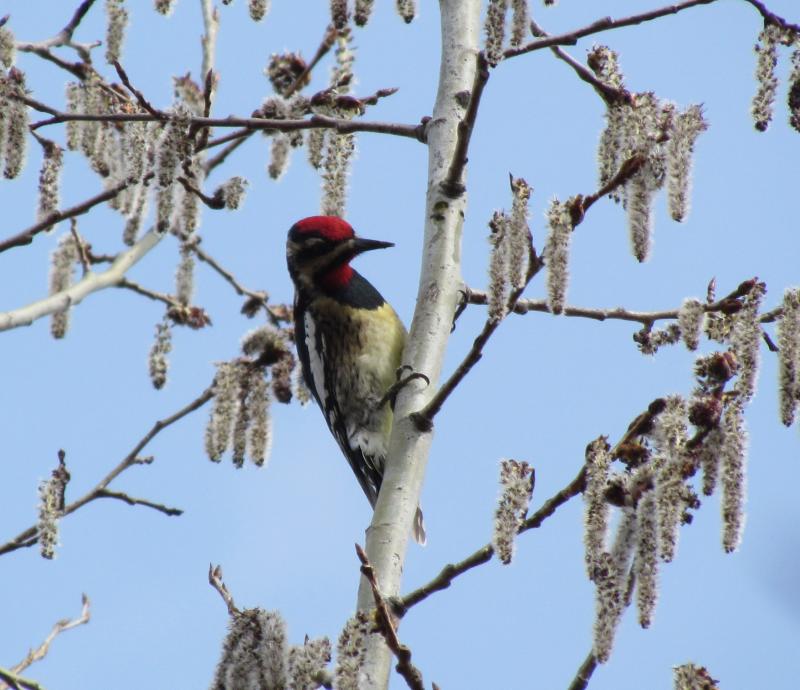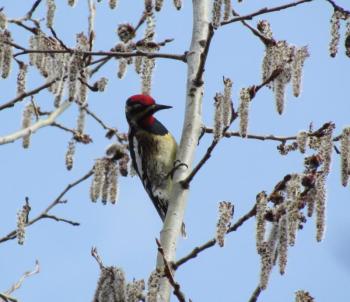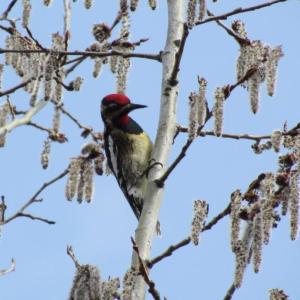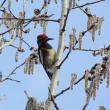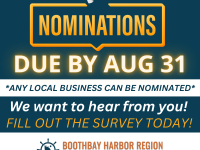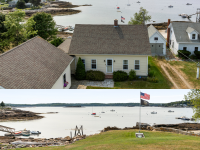Taking Stock of Our “Mindfulness” Maine Birding Big Year
Regular readers may recall that we have decided to do a “mindfulness birding” Maine Big Year in 2019 to see how many species we can find in the state this calendar year. People who do a competitive Big Year with the hopes of breaking a record usually zip off immediately to try to see any and every rare species that shows up. We are not in that category.
That’s where the “mindfulness” part comes in. We’re keeping an eye on bird listerves, Facebook pages, and eBird, but rather than dropping everything, we work our species goals into other aspects of our lives. Last weekend, for instance, we looked for a white-fronted goose as part of our trip to get our son sized for his tux for the prom. The tux fitting was a success; the birding piece, not so much, as we discovered the reported goose was actually a domesticated bird by the name of “Blackie.”
We have, however, had success elsewhere so far in 2019 to see a few rare or uncommon species. That included the famous great black hawk at Deering Oaks in Portland before it succumbed to the harsh winter conditions that it was not suited to endure. The canvasback in Damariscotta was a pleasure to see earlier in the winter as was the northern shoveler in Freeport. But there were a number of other rare birds that we did not (or could not) “chase,” as birders describe the pursuit to try to see a particular bird.
Now as winter is sliding quickly away and spring is showing its warm, sunny face, we are taking stock of the winter birds we may have to wait until next November or December to try to find. While we did see a number of winter visitor icy-plumaged Iceland gulls (including a surprise one that landed briefly in front of us at a busy intersection in Topsham), we did not see its larger winter cousin, the glaucous gull.
A handful of common redpolls graced us with their presence at our backyard bird feeder this winter, and we had a wonderful encounter with a flock of gentle, unassuming pine grosbeaks (both visiting from their northern Canada breeding range) but despite our high hopes, we never did find any of the big-billed, yellow evening grosbeaks. A few do breed here and there in Maine, though, so perhaps we may add that to our list in the coming months.
Purple sandpiper, the only sandpiper species that winters along our coasts in large numbers, is so far for us a big miss. The good news is that small numbers sometimes linger even occasionally into early May, feeding near the breaking waves on rocky headlands and islands and sometimes on the Rockland Breakwater. A walk there out to the lighthouse and back may be necessary on the next decent weekend if we are to find a purple sandpiper before next fall.
We had beautiful views of the “lords and ladies” of the duck world here this winter—harlequin ducks—on a trip to Two Lights State Park in Cape Elizabeth back in February. A handful of Barrow’s goldeneyes blessed us and many other birders with close-up views at the Freeport town landing this winter as well. But we were not able to lay eyes on that other Maine winter waterfowl royalty, the king eider—one was seen briefly in Wells, but we couldn’t work it into our schedule. That one will probably now have to wait until late November or December.
We enjoyed the splendor of several snowy owls in early 2019. Some winters it can be difficult to find one. On the other hand, despite much scanning of open field edges and the tops of trees and bushes, we were not lucky enough to get even a glimpse of any of the very rare winter visitor owls, the great gray owl or hawk owl.
Now our focus is turning to the flood of spring arrivals that will soon double the number of species on our list (which now hovers around 80) to perhaps 150 or more. Just in the last few days we have added our first of spring eastern phoebes and double-crested cormorants. Other birders have reported tree swallows and great blue herons. Yellow-bellied sapsuckers and palm warblers will be right around the corner, too.
As spring continues to spring, we hope you, too, will be able take the time to enjoy and be mindful of the birds that mark the season!
Jeffrey V. Wells, Ph.D., is a Fellow of the Cornell Lab of Ornithology. Dr. Wells is one of the nation's leading bird experts and conservation biologists and author of “Birder’s Conservation Handbook”. His grandfather, the late John Chase, was a columnist for the Boothbay Register for many years. Allison Childs Wells, formerly of the Cornell Lab of Ornithology, is a senior director at the Natural Resources Council of Maine, a nonprofit membership organization working statewide to protect the nature of Maine. Both are widely published natural history writers and are the authors of the book, “Maine’s Favorite Birds” and “Birds of Aruba, Bonaire, and Curaçao: A Site and Field Guide” from Cornell Press.
Event Date
Address
United States

